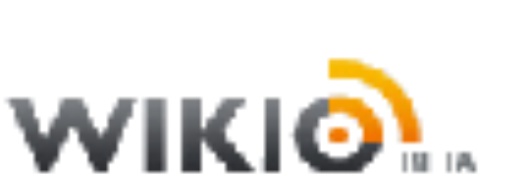Working Web 2.0 examples in Europe
Published on
Translation by:
 amanda huelse
amanda huelse
Even the old continent has joined second generation internet

Netvibes and PageFlakes
One is French and the other German. Together they are ‘startpage’. This is otherwise known as a personal web page that allows users to collect and view all the latest updates on their pre-selected news sources. The technology is RSS (Really Simple Syndication), which lets a user receive headlines and links from various newswires - like cafebabel.com - in real time.
What’s more, users can receive updates on their local news bulletins or learn about the most recent releases of their favorite products. Everything is free and personalized. ‘Netvibes’ and ‘Pageflakes’ function independently because they position themselves in specific markets and are careful not to co-opt existing tools, but rather add value and innovation to pre-existing ones. The challenge for both is managing to live up to the reliability they are creating around their service.
 Wikio: Traditional Media and Blog in One
Wikio: Traditional Media and Blog in One
 ‘Wikio’ is a French enterprise (recently launched in Italian that organises and posts content while retaining the classical characteristics of blogs and articles proposed by their users. Everything posted is then voted on by visitors, greatly influencing the hierarchy of published information. The more a content is clicked, the more it will be visible on the homepage. It is a mix between Digg, Google News and a blog community. The best thing about ‘Wikio’ is that it makes improvements on diverse concepts already in existence. A well-placed bet for the French founder Pierre Chappaz, ex-founder of Kelkoo and ex-president of Yahoo.
‘Wikio’ is a French enterprise (recently launched in Italian that organises and posts content while retaining the classical characteristics of blogs and articles proposed by their users. Everything posted is then voted on by visitors, greatly influencing the hierarchy of published information. The more a content is clicked, the more it will be visible on the homepage. It is a mix between Digg, Google News and a blog community. The best thing about ‘Wikio’ is that it makes improvements on diverse concepts already in existence. A well-placed bet for the French founder Pierre Chappaz, ex-founder of Kelkoo and ex-president of Yahoo.
Fiat 500: Even Advertising Has Gone ‘2.0’
Even industry giants ride the 2.0 wave. For example, the new ad campaign from the mythical Fiat 500 – scheduled to come out in 2007 – is a perfect illustration of ‘branding 2.0.’ The viral online marketing model is the same kind that brought fame to the film ‘Snakes on a Plane’. Along with so-called ‘crowd sourcing’, agencies literally use the ‘crowd’, aka the public, as their ‘source’ for inspiration.
Fiat 500’s website brings users (or future customers) into the creative process of ad production, making the possibilities limitless: create or download a soundtrack in Mp3; learn to say ‘500’ in all the world’s languages; create and/ or vote on the car’s next mascot; transfer images; create and share videos; dream up the newest ‘concept car’ for Fiat; propose Fiat’s new website design; participate in a discussion on the design of car accessories; and so on. Soon we’ll be able to see if sales improve. Meanwhile, Renault has already launched a website similar to the ‘Twingo’ concept.
‘Produit en Italie, invidie en France’, as another famous company’s unforgettable 2.0 campaign would say…Nike’s.
Photos by PageFlakes, Jacques Froissant, Archivi FIAT
The pioneers of European Web 2.0 at a glance
 Country: France
Country: France
Launch date: 2005
Founder: Tarik Krim
Daily page hits: circa 45 million (Fonte Alexa)
Registered users: 5 million (Fonte NetVibes)
 Name: Pageflakes
Name: Pageflakes
Country: Germany
Launch date: 2005
Founder: Christoph Janz
Daily page hits: circa 15 million (Fonte Alexa)
 Name: Wikio
Name: Wikio
Country: France
Launch date: 2006
Founder: Pierre Chappaz
Daily page hits: circa 5 million (Fonte Alexa)
 Site: Fiat 500
Site: Fiat 500
Country: Italy
Launch date: 2006
Daily page hits: 200, 000 (Fonte Alexa)
Translated from Europa, quegli esempi di Web 2.0 che funzionano


